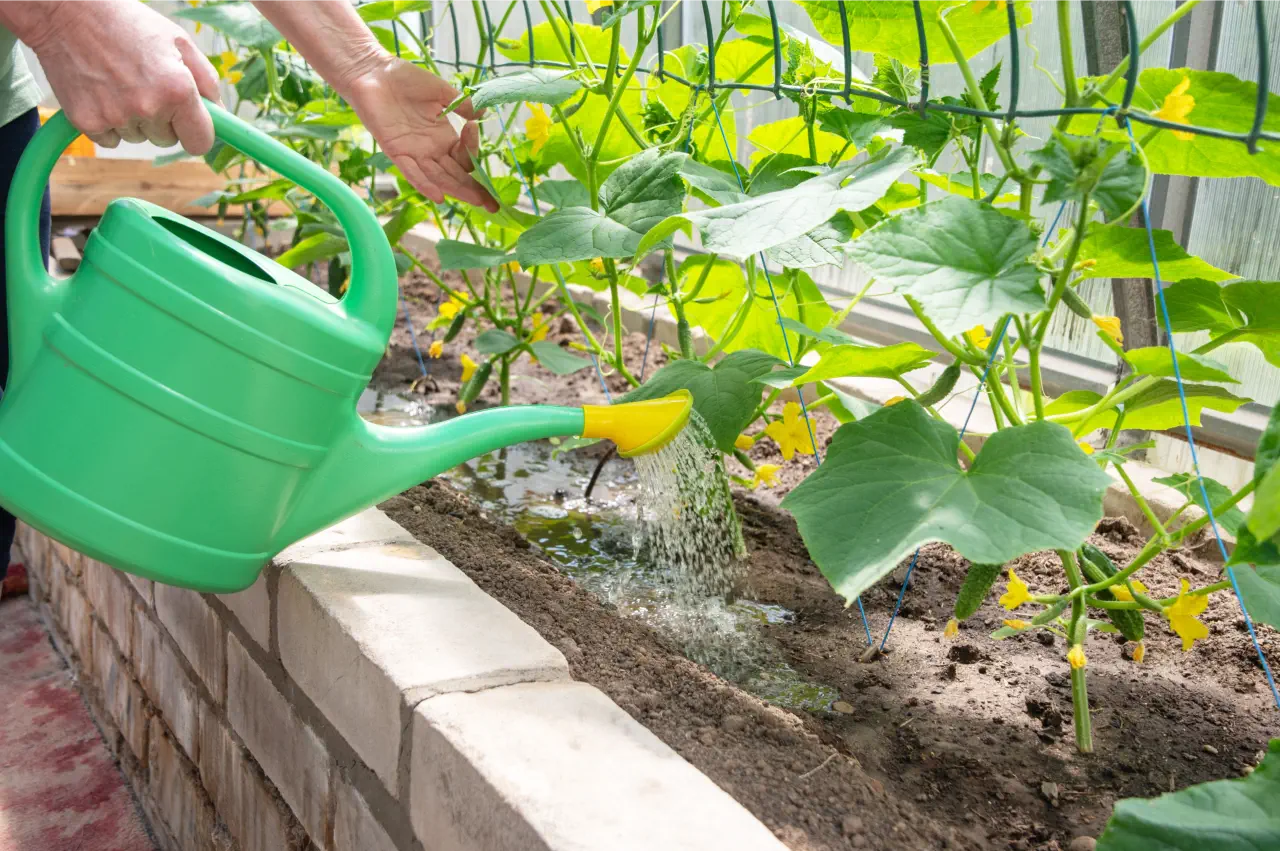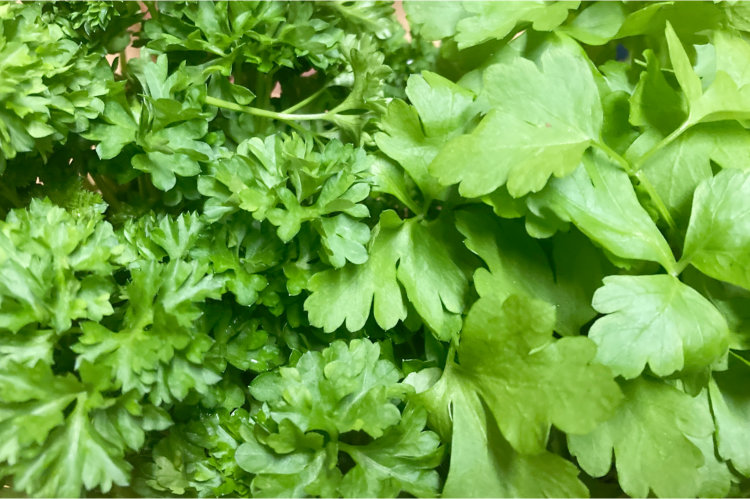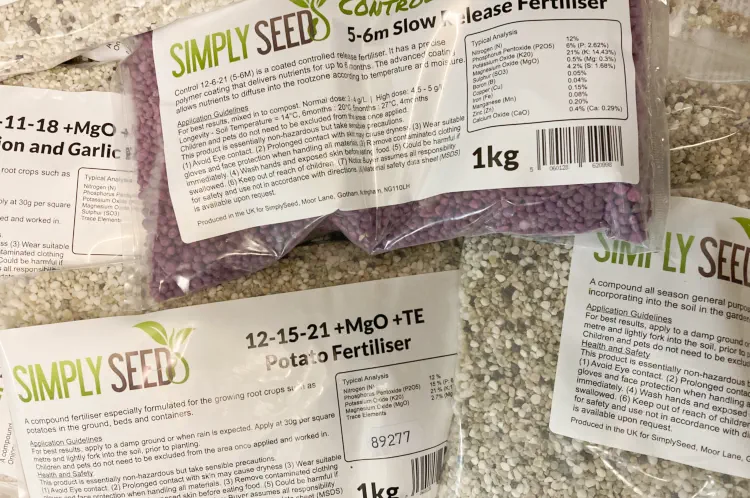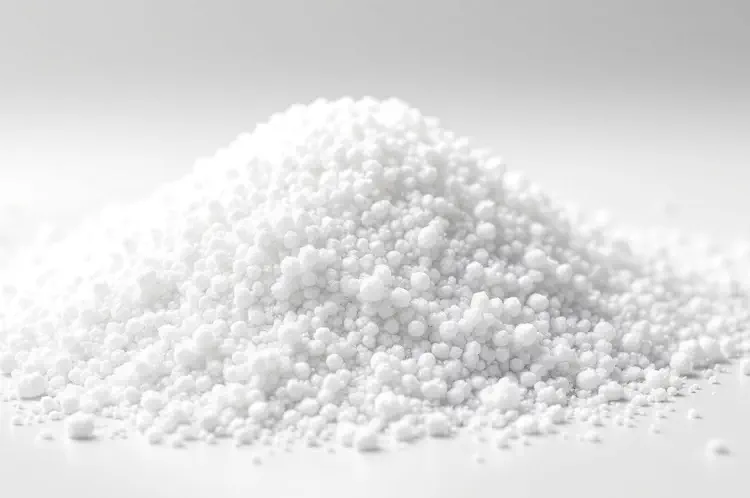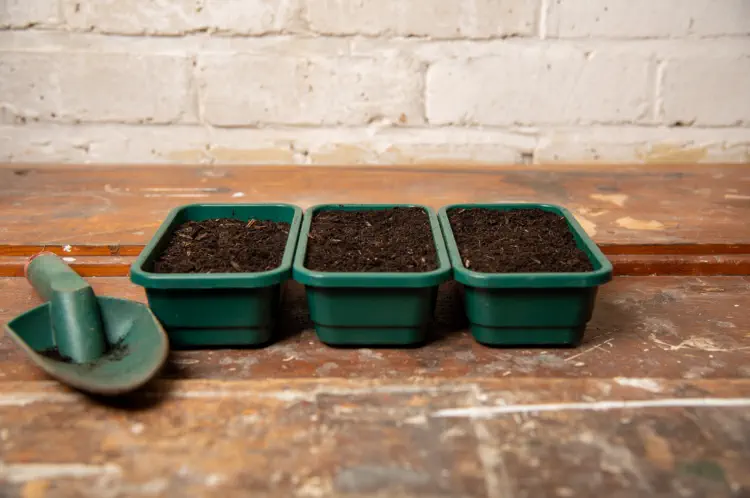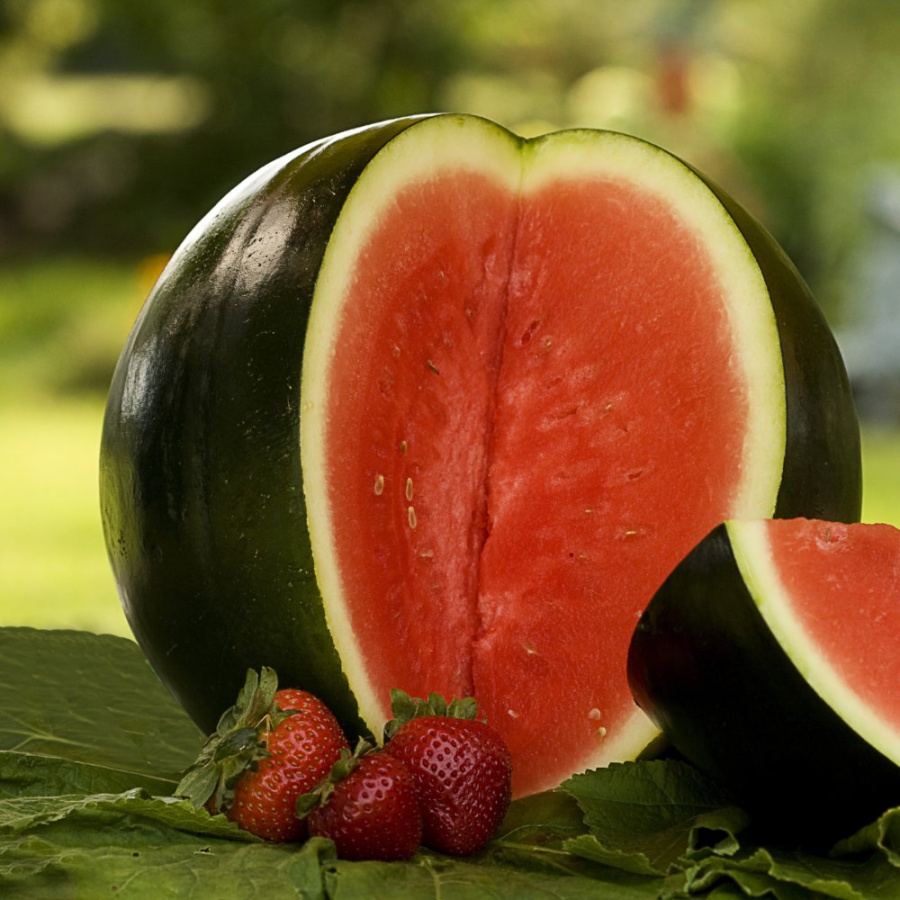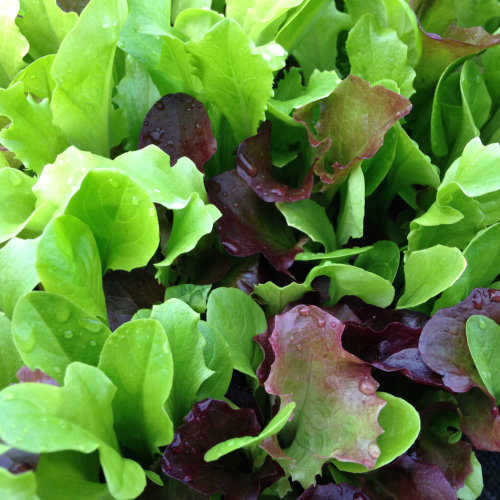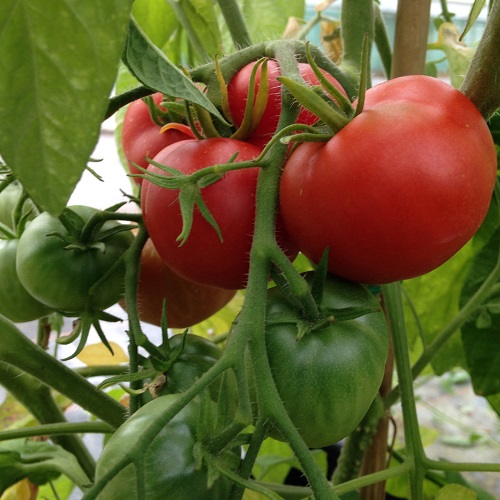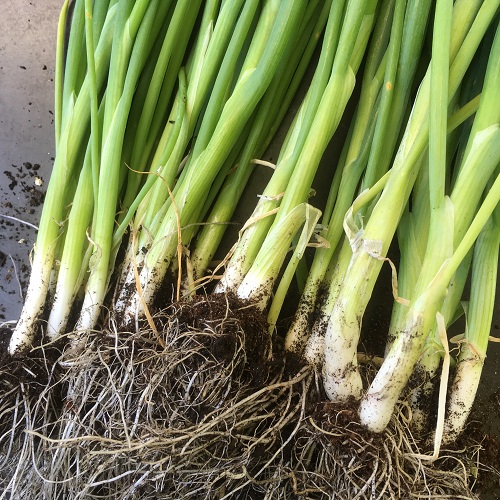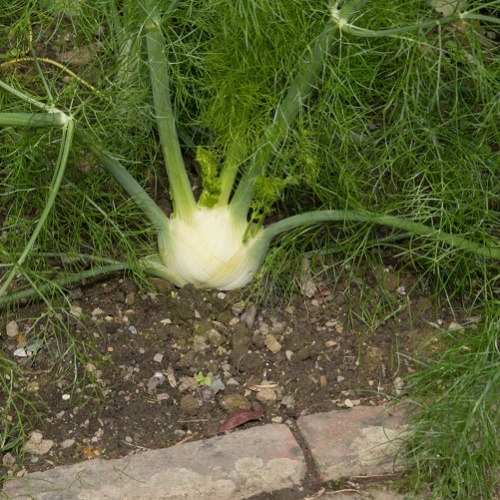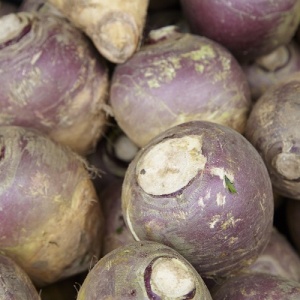Feeding cucumber plants is crucial for healthy growth and plenty of fruit. Knowing when to start feeding and what fertilisers to use can make all the difference in your harvest. Here’s our top tips and best practices for feeding cucumber plants whether you’re growing them indoors, outdoors or in a greenhouse.
Quick Summary
-
Start feeding cucumber plants when they’re 15cm tall.
-
Use fertilisers with moderate nitrogen and high phosphorus and potassium for cucumber plants, adjust the nutrient mix as plants move from growth to fruiting stages.
-
Greenhouse cucumbers need more frequent feeding than outdoor cucumbers, and specific liquid fertilisers and high potassium feeds during flowering for optimal growth and fruit production.
When to Start Feeding
Start feeding your cucumber plants when the seedlings from the cucumber seeds are about 15cm tall. At this stage the young plants have their first pair of ‘true’ leaves and are ready to be potted on. This is a critical stage as the roots can start to expand and take up more nutrients and lay the foundation for healthy growth and fruiting.
Transplanting your cucumber seedlings? Don’t forget to mix compost or well rotted manure into the soil. This will add organic matter to the soil and release nutrients to the cucumber plants as they need them. Indoor cucumbers should be potted on about 3-4 weeks after germination to give them enough space and nutrients.
Cucumbers need plenty of nutrition during the growing season to grow and produce fruit. Regular feeding is key but timing is everything. Start at the right time and your cucumber plants will get the boost they need to go from delicate seedlings to strong productive vines.
Fertilisers for Cucumber Plants
Meet the specific nutritional needs of cucumbers by using fertilisers with moderate nitrogen and high phosphorus and potassium. Ideal NPK ratios for cucumber plants are 3-4-6 or 5-5-5 which will give a balanced supply of nutrients. These ratios will give the plants enough nitrogen for growth, phosphorus for root development and potassium for fruiting.
During the early growth stage, cucumbers need more nitrogen to support their rapid growth. A slow release fertilizer with high nitrogen can be beneficial at this stage. But as the plants start to flower and fruit, their nutritional needs change. Potassium becomes more important to support flower and fruit production.
Use a tomato feed when feeding your cucumber plants during the flowering stage. Tomato feed has more potassium which is essential for the development of female flowers in cucumber plants and a healthy harvest. Wood ash and kelp meal are examples of high potassium fertilisers for cucumber plants.
A balanced fertiliser like 10-10-10 can also be used. This will give the cucumber plants a general supply of nutrients throughout their growth cycle. By knowing and meeting the specific nutritional needs of your cucumber plants you can get the best out of them and have a bigger harvest.
Greenhouse Cucumbers vs Outdoor Cucumbers
Growing conditions in greenhouses and outdoors are different so the feeding needs of different outdoor cucumber varieties are also different. Greenhouse cucumbers crop for a longer season from mid summer to early autumn while outdoor cucumbers are weather dependent and have a shorter fruiting period. Knowing these differences is important to give the right nutrients at the right time.
To plant outdoor cucumbers including ridge cucumbers start by planting them in well drained fertile soil with added well rotted organic matter and a general purpose fertiliser. This will give the plants access to the nutrients from the start. Once planted outdoor cucumbers benefit from additional feeding with a balanced liquid fertiliser every 10-14 days and switch to high potassium feed when they start to flower. Growing your own cucumbers this way will give you a healthy and tasty harvest.
Greenhouse cucumbers require:
-
More frequent feeding with general liquid fertilizer every 10-14 days
-
Weekly tomato feed when they start to flower
-
Controlled environment of the greenhouse allows for better management of humidity and temperature which can improve nutrient uptake and plant health
-
Extra watering and feeding especially when grown in containers to support their longer growing season.
Fertilising Cucumber Plants
Fertilising correctly is important for healthy and productive cucumber plants. For granular feed work the right amount into the soil before planting and water well to help break down the granules. This will make the nutrients available to the plants as they grow. Leave a 10cm gap around the stem when applying granular fertiliser to avoid damaging the plant.
Liquid fertilisers should be applied every 1 to 2 weeks. Here’s how:
-
Pre-water the soil if it’s dry to ensure even uptake and the feed doesn’t drain away too quickly.
-
Mix the liquid feed with water in a watering can according to the dosage.
-
Apply to the soil around the plant. This way the nutrients will be absorbed by the roots.
Granular fertilisers can be used less often, only twice during the growing season. Here’s how:
-
Apply a second dose after 2-3 months or as instructed, spread evenly around the base of the plant.
-
Carefully work the fertiliser into the soil around the plant, don’t damage the roots.
-
Water the soil after applying granular fertiliser to activate the nutrient release.
Following these steps will give your cucumber plants a constant supply of nutrients throughout their growth cycle and you can feed your cucumber plants effectively.
Organic Fertilisers for Cucumber Plants
If you’re into organic gardening there are many organic fertilisers suitable for cucumber plants. Nettle tea and comfrey tea are two popular homemade fertilisers that provide nutrients naturally. Comfrey fertiliser or nettle feed can be made by mixing the plant’s leaves with water to create a nutrient rich tea. Comfrey tea which is high in potassium is good during flowering and fruiting stage while nettle tea which is high in nitrogen is good during active growth stage.
Wood ash is another high potassium organic fertiliser, that’s good when cucumber plants start to flower. Kelp meal is also a great organic option for flowering and fruiting in cucumbers. These organic fertilisers provide essential nutrients and improve soil health and structure.
Using organic fertilisers will give your cucumber plants a healthy and sustainable environment by enhancing the soil biome.
Feeding Cucumber Problems
Feeding cucumber plants requires a balance. Over fertilising especially with nitrogen can produce long vines with few flowers or fruits. This is often seen when gardeners apply too much soluble mineral fertiliser and increase the salt concentration at the roots and cause nutrient imbalance. To have a healthy mix of male and female flowers avoid over fertilising.
Nutrient deficiencies can also be a problem. Cucumber plants with pale green or yellow older leaves may need a nutritional boost. Monitor the plants regularly and adjust the feeding schedule as needed. Yellow leaves and small cucumbers can sometimes be mistaken as nutrient deficiencies but may be caused by cucumber mosaic virus.
To avoid these problems follow the recommended feeding schedule and use the right amount of fertiliser. Check your plants regularly for signs of stress and respond quickly to keep them healthy and productive.
Feeding Schedule
Plan your feeding schedule to grow your cucumber plants optimally. Once the seedlings are around 15cm tall and have 2-3 sets of true leaves you can start feeding. At this stage you can apply a balanced liquid fertiliser every 1-2 weeks.
Cucumbers are heavy feeders especially when grown in containers and need to be fed regularly to produce good crops. To grow cucumbers successfully during active growth phase feed cucumbers every 10-14 days with a general liquid fertiliser. Once the first flowers appear switch to high potassium fertilizer like liquid tomato food to encourage more flowering and fruiting. This way of feeding cucumbers will give you a healthy and bountiful harvest.
Slow release granular fertilisers can also be applied at planting time to provide a continuous supply of nutrients. By following this feeding schedule you can make sure your cucumber plants get all the nutrients they need for strong growth and fruiting.
More Tips for Healthy Cucumbers
Growing healthy cucumber plants requires more than just enough feeding. Consistent watering is important especially when the plants are about to produce fruit as lack of water can limit vine growth and cause wilting. Mulching with compost, straw, dried leaves or shredded newspaper can help maintain soil moisture and reduce evaporation.
Adequate spacing and use of trellis can improve air circulation and support plant growth. Check regularly for pests like aphids, whiteflies and red spider mites and use soap spray or other pest control methods if they appear. By following these additional tips you can create a perfect growing environment for your cucumber plants and have a healthy garden.
Time to Get Feeding!
Feeding cucumber plants is all about understanding their nutritional needs, choosing the right fertiliser and applying it correctly. By starting to feed at the right time, using the right fertiliser and following a schedule you can make sure your cucumber plants will thrive. Add organic fertilisers and address common feeding problems and you’ll have healthier and more productive plants.
Remember, consistent care and attention to details will give you a bountiful cucumber harvest. Now you have the knowledge and tips to grow the best cucumbers and enjoy the fruits of your labor. Happy gardening!
FAQs
When to start feeding?
- Start feeding when the seedlings are 15cm tall and have their first set of true leaves.
What type of fertiliser?
- For cucumbers use a fertiliser with moderate nitrogen and high phosphorus and potassium, NPK 3-4-6 or 5-5-5.
How often to feed greenhouse cucumbers vs outdoor cucumbers?
- Feed greenhouse cucumbers every 10-14 days with general liquid fertiliser, outdoor cucumbers need less frequent feeding since the soil is already fertile. Adjust feeding when greenhouse cucumbers start flowering.
Can I use organic fertilisers?
- Yes, organic fertilisers like nettle tea, comfrey tea, wood ash and kelp meal are great for your cucumber plants. They provide essential nutrients and promote growth.
What to watch out for?
- Over feeding and nutrient deficiencies can cause poor fruiting and pale leaves. Monitor and adjust.

